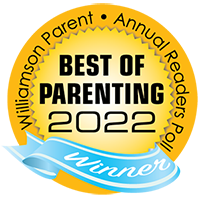The kids are back in school, the leaves have begun to change, and there’s a chill in the air. Do you know that means? It’s time for your child (and you too) to get his/her flu shot. In the Southeast, influenza or flu for short, typically begins in November, peaks in February and is gone by April. People at each end of the age spectrum – those less than 2 and those over 65 – suffer the greatest complications and are most likely to require hospitalization. It is the school age children that contract the disease at school and spread it to other family members.
Immunization remains the most effective way to reduce infection. Pediatricians encourage all children over the age of 6 months to get a flu shot starting in September. Since the strain of flu that circulates changes slightly each year, the vaccine changes as well. As a result, everyone must be re-vaccinated each year.
There are several types of flu vaccines to choose from these days. The nasal mist is a popular choice since it is sprayed in the nose instead of a shot. It is only for ages 2-49 and its recipients must have a healthy immune system since it is a live virus vaccine. It can trigger wheezing so patients cannot have a history of asthma either. Studies have shown that this is the most effective vaccine for children over the age of 2.
The other vaccines are injectable vaccines and are composed of inactivated – or dead virus, so they can be given to anyone. There are two types of this vaccine now – one that protects against 3 strains of flu and one that protects against 4 strains. The vaccine that includes 4 strains is a newer, slightly better vaccine. However there may be limited quantities of it for a time. The first year children under 9 receive a flu vaccine they need 2 vaccines one month a part before they are fully vaccinated. However, in subsequent years they will only require one vaccine.
The only people who cannot receive a flu vaccine at all is those people who have a history of allergy to flu vaccine, history of Guillain-Barre from flu vaccine and some people who have severe egg or chicken allergy. With mild egg allergy, most people can receive the vaccine. Be sure to discuss it with your child’s pediatrician. People who have a fever should delay their vaccine only until fever free. It is ok to get the nasal spray some years and the injectable other years. The most common side effect from the injectable vaccine is redness, soreness and swelling at the injection site. Since the vaccine is not live, it cannot give your child the flu.
As I said in the beginning, it is that time of year. Get your children and yourself vaccinated for influenza now! It isn’t too early. Do it before it is too late!
Click here to get information on our flu clinics.
The information and content on our website should not be used as a substitute for medical treatment or advice from your doctor.




